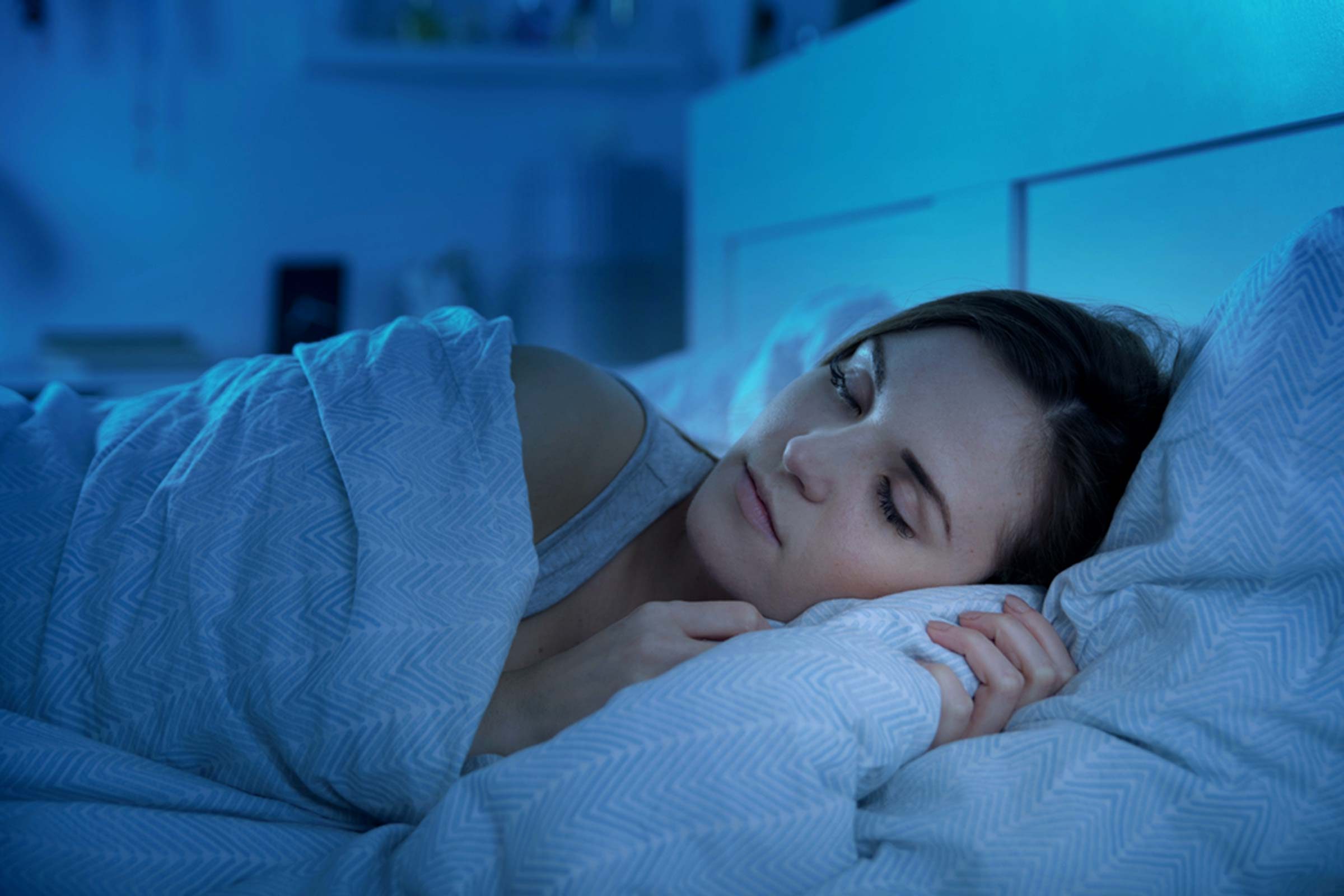
Try to stay awake
If you want to fall asleep faster, think about staying awake. “It sounds counterintuitive, but for those who find it difficult to sleep because they keep worrying about not falling asleep, do the opposite,” says Sujay Kansagra, MD, director of Duke University’s Sleep Medicine program and Mattress Firm’s sleep health consultant. Most of the time falling asleep is an involuntary process that takes virtually no effort on our part, but if we’re anxious, we do things like looking at the clock and calculating how little sleep we’re going to get, which then causes sleep performance anxiety. “Instead of worrying about falling asleep, think about staying awake instead. This often lessens anxiety and gives your mind a chance to relax enough to fall asleep. It’s a technique known as paradoxical intent, a cognitive behavioral therapy technique used to lessen the anxiety around falling asleep,” says Dr. Kansagra.
Use these simple tips to fight off sleep.
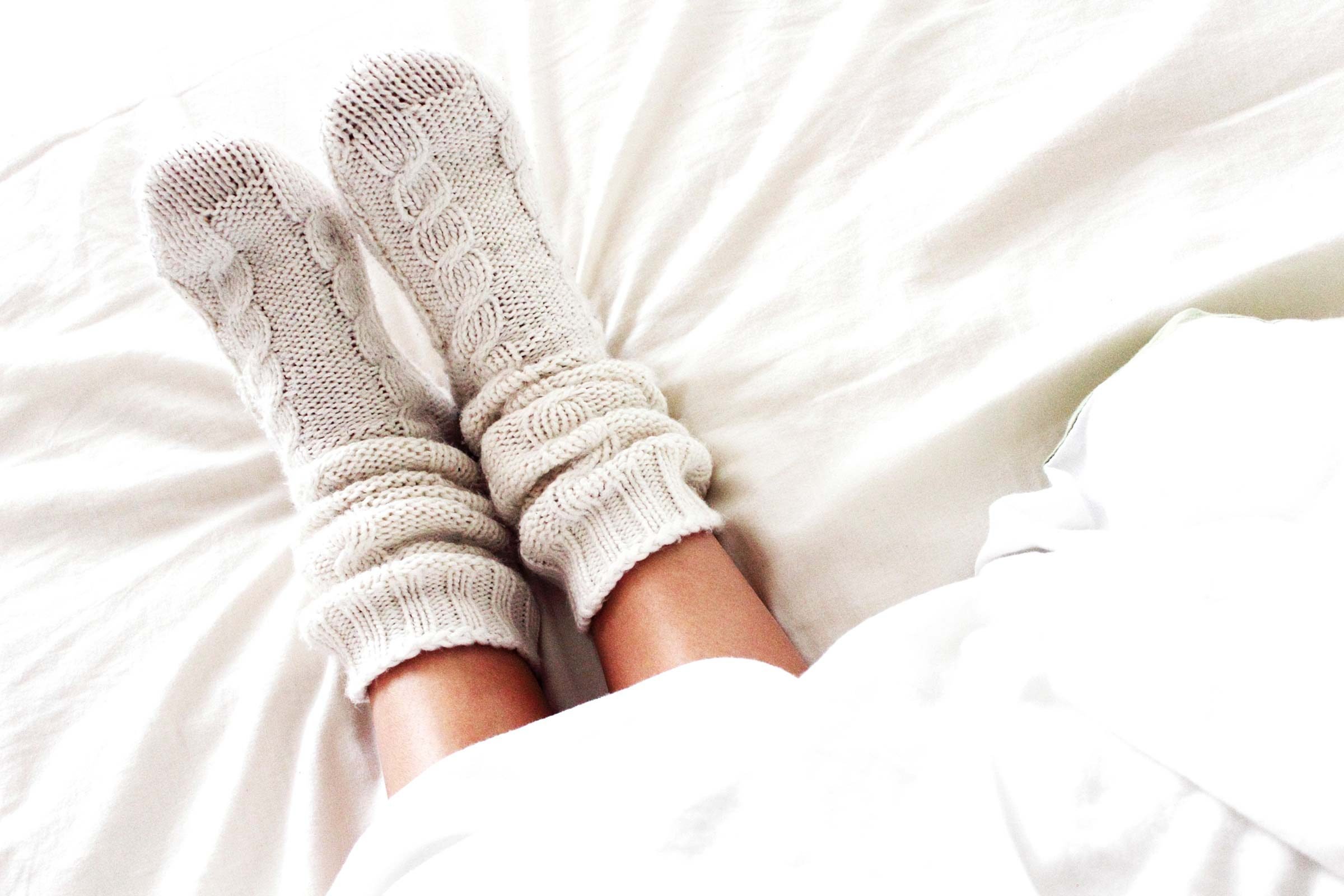
Keep your toes toasty
If you have cold feet, your brain may not get the signal its time to snooze. According to Joseph Krainin, MD, founder and president of Singular Sleep, LLC, and Chief Medical Expert for SoClean, wearing socks to bed can decrease the amount of time it takes to fall asleep. “The benefit of wearing socks to bed seems to be vasodilation. The best explanation is that warming the feet causes blood vessels to dilate, and this signals to the brain that it’s time to fall asleep.”
Discover the serious downside to sleeping in on weekends.
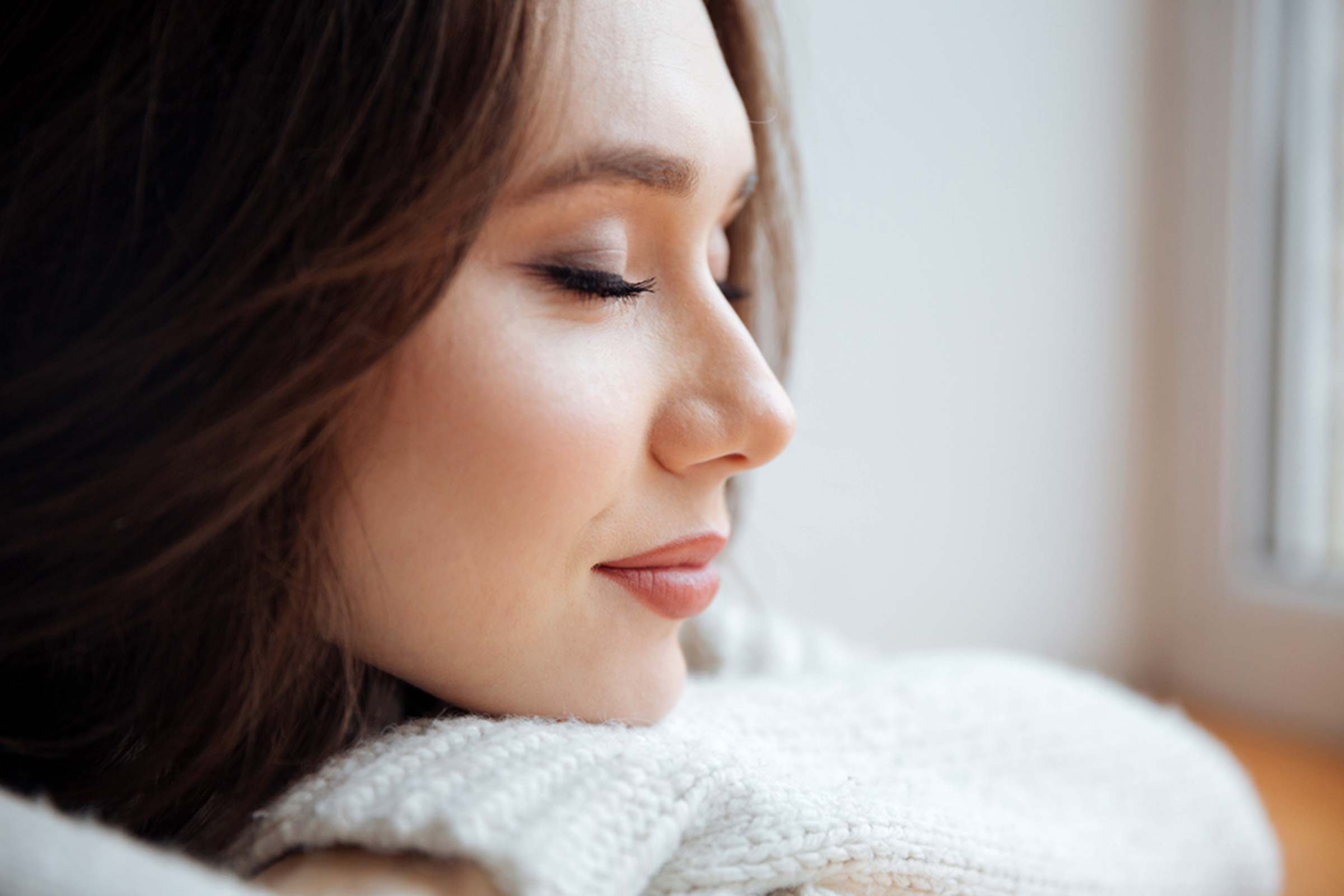
Try autogenic training
This sleep trick involves a little practice, but when you get proficient at it, it has big payoffs—not just for insomnia but other stress-related issues you may have. According to Svetlana Kogan, MD, integrative and holistic doctor and author of Diet Slave No More!, autogenic training is a self-relaxation technique dating back to the 1930s. It is based on self-hypnosis coupled with progressive muscle relaxation. The training produces a feeling of warmth and heaviness throughout your body, which results in a deep state of physical relaxation and mental peace. “International research studies, including a 2002 study published in Applied Psychophysiology and Biofeedback, support that it works,” says Dr. Kogan. If you want to give it a shot, make an appointment with a qualified hypnotist.
These are the best songs to help you sleep, according to science.
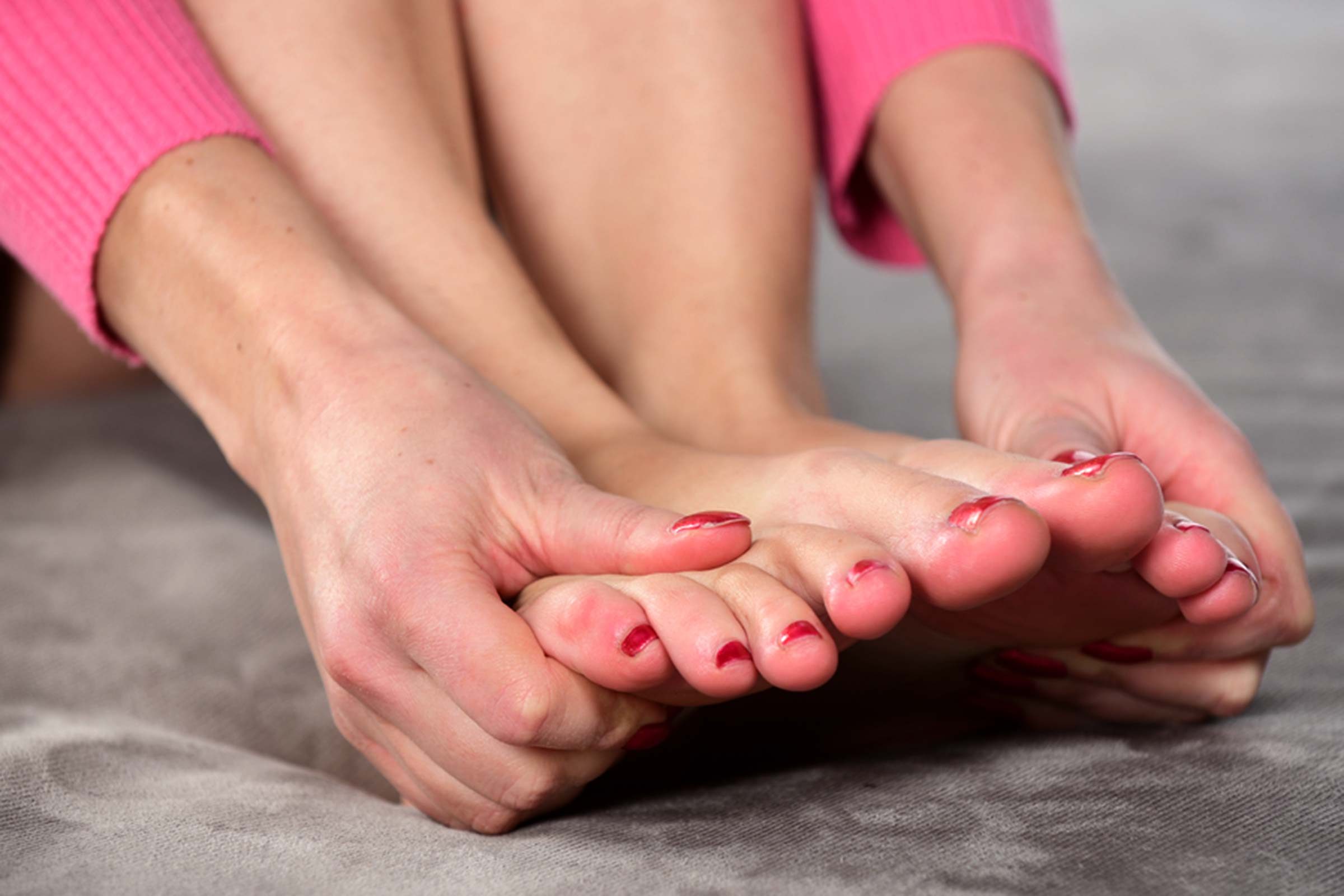
Rub on soothing oils
Studies show that an ancient treatment called Shirodhara may help with insomnia. “This ancient Ayurvedic treatment involves dripping warm brahmi oil onto the forehead of the patient,” says Dr. Kogan. Ananta Ripa Ajmera, a certified Ayurveda health practitioner and yoga instructor and author of The Ayurveda Way, offers another option from the Ashtanga Hridayam text: “Oil your feet, the top of your head, and the backs of your ears before sleeping.” But who wants to crawl into bed with an oily head? No worries. Sit on a towel and warm the container of oil in a bowl of hot water. Ajmera recommends sesame oil for winter and spring or if you have pain, and coconut oil for summer, as it has a cooling potency. Follow with a warm shower and non-drying soap.
Try these stress management tips from the experts!
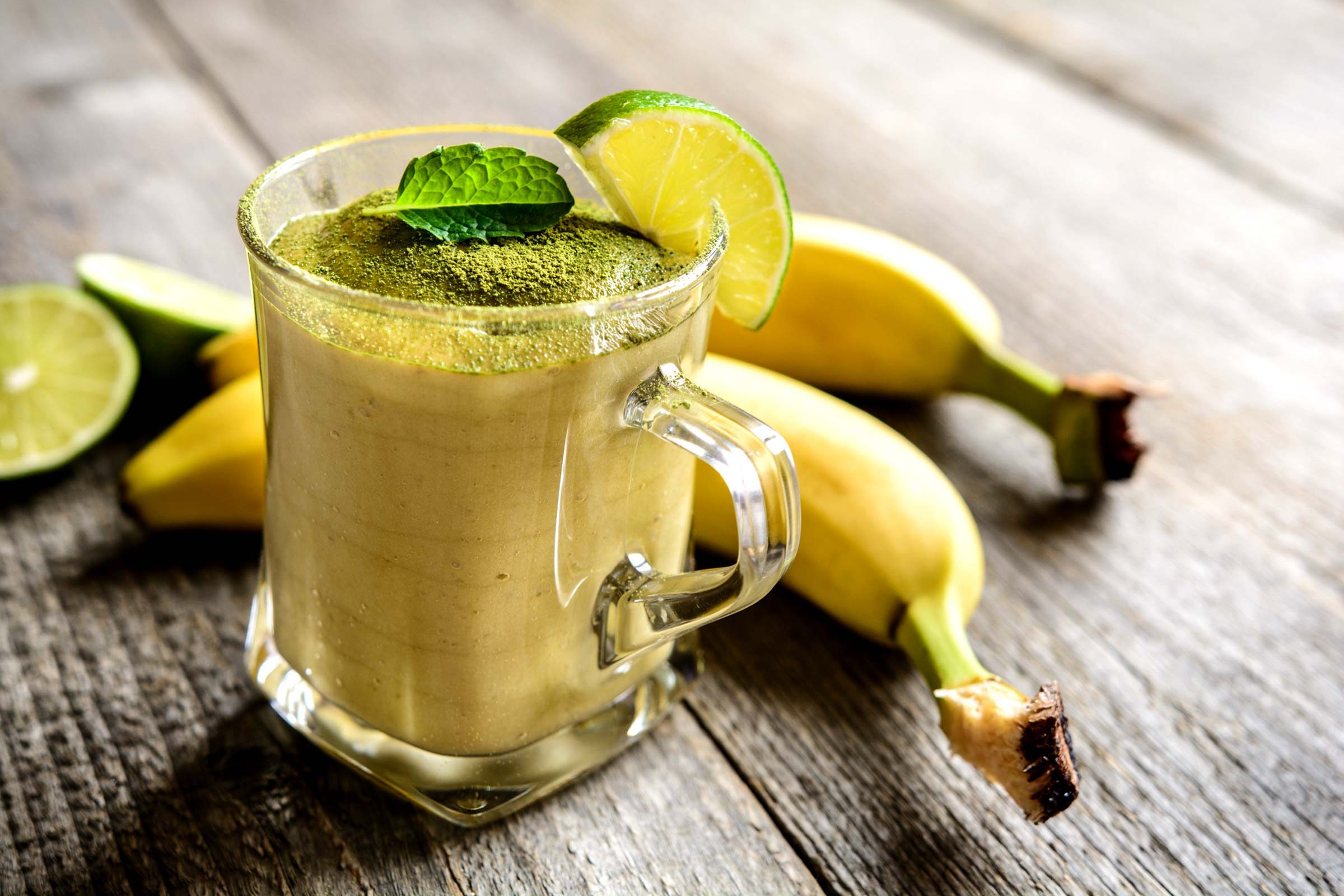
Banana tea
Magnesium is a busy mineral in our body, responsible for hundreds of bodily functions, including promoting relaxation. Bananas contain a lot of magnesium but the banana peel is where it’s at for sleep. Michael Breus, PhD, of SleepScoreLabs, a diplomat of the American Board of Sleep Medicine and a fellow of The American Academy of Sleep Medicine, created a recipe for banana tea that can help you fall asleep. “Take an organic banana, wash it, cut off the tip and the stem, and then cut it in half, leaving the fruit in and the skin on. Put it in boiling water for three to four minutes, and drink the water with a little honey.” Why honey? According to Dr. Breus, it helps regulate blood sugar throughout the night, which is a common reason why some of us wake up in the middle of the night.
Find out why dream deprivation is just as unhealthy as sleep deprivation.

Blow some bubbles
Martin Rawls-Meehan, CEO and founder of the sleep technology company Reverie, shares this technique with his clients, because blowing bubbles activates a similar mechanism to taking deep, meditative breaths. “It also has the effect of redirecting your thoughts from the worrying to the more lighthearted. The act of blowing bubbles reminds us of the joy of childhood, which is a good way to de-stress,” says Meehan.
Got no chill? Try these simple ways to relax that don’t cost a cent.
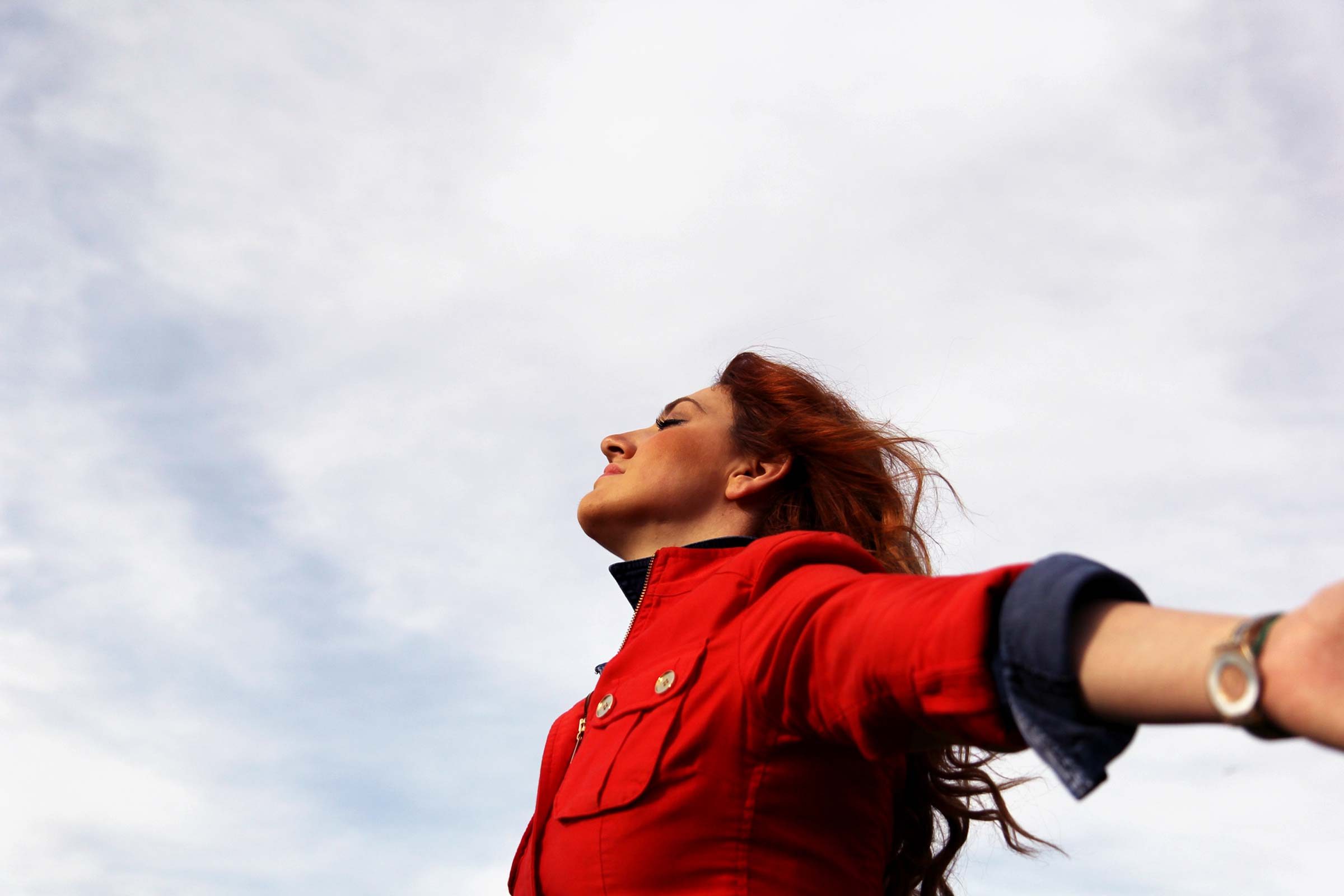
“4-7-8 breathe”
This technique is something Harley Sears, a consulting hypnotist, teaches his clients when they are looking for ways to get to sleep. All it takes is three steps. First, breathe in deeply through your nose for four seconds. Then hold your breath for seven seconds. Then exhale through your mouth for eight seconds. Repeat this process four times. Why does it work? “This exercise allows the lungs to become fully charged with air, allowing more oxygen to be circulated throughout the body, which promotes a state of relaxation,” says Sears. For maximum benefit, practice this technique twice a day.
Here are more tiny changes that will help you sleep better tonight.
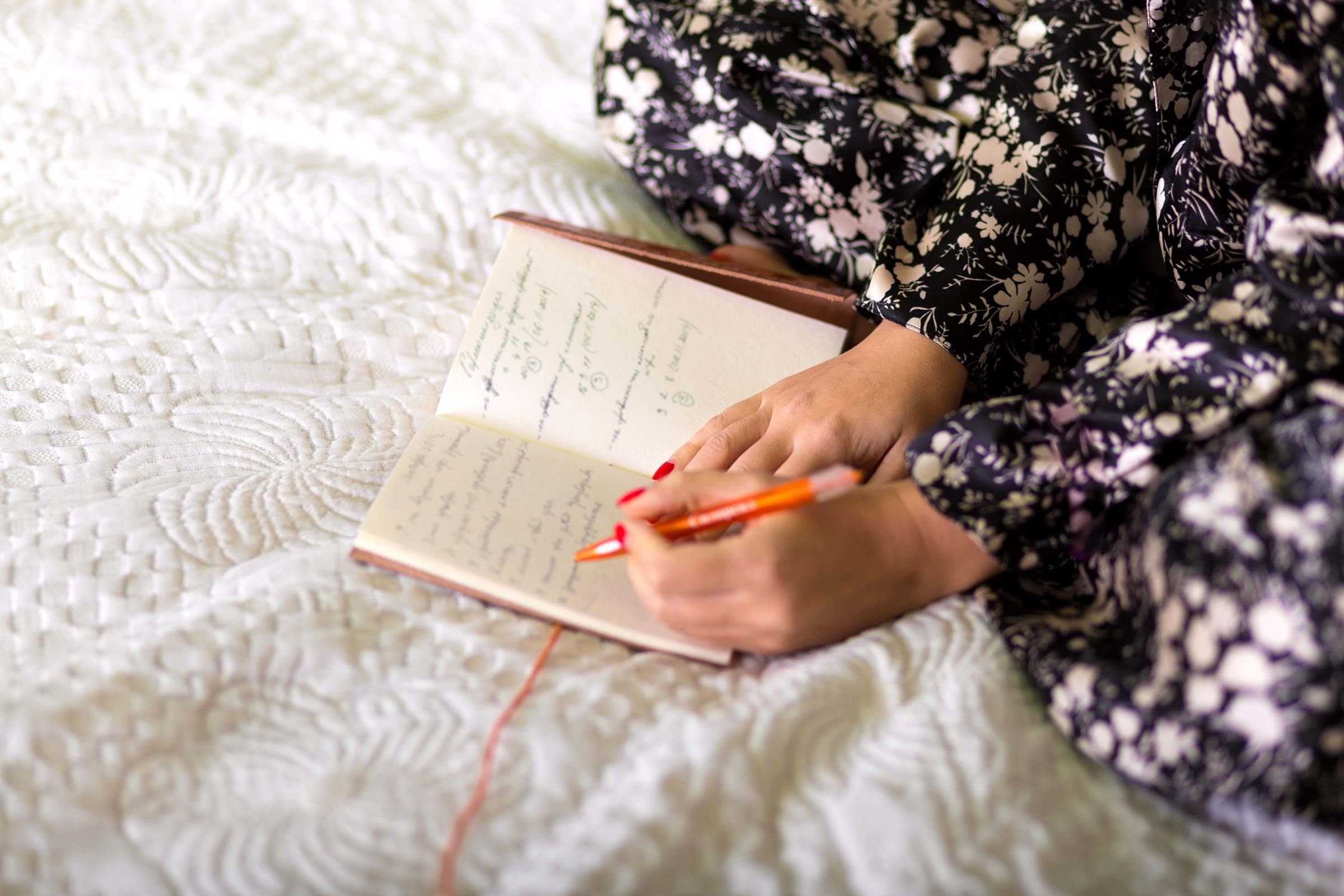
Try sleep restriction therapy
Restrict sleep to get more sleep? It’s all about setting a sleep cycle. Sleep restriction therapy is actually a behavioural treatment for insomnia that limits your time in bed to the actual time of sleeping. Less time in bed can result in mild sleep deprivation at first, but it can also help promote an earlier sleep onset. “This earlier sleep onset should decrease the insomnia and then give the patient confidence in his ability to regain natural sleep,” says Damon Raskin, MD, who specializes in sleep medicine and is affiliated with Concierge Choice Physicians.
How does it work? The patient keeps a sleep journal for one to two weeks and records the average time slept plus 30 minutes. For the next two weeks, the patient limits his time in bed to that average sleep time, using a fixed bedtime and wake time. If all goes well and the patient feels good, the schedule stays in place. If the patient feels tired during the day, he should add 15 minutes to the time in bed, with 15 minutes added each week until the patient feels well rested after a night’s sleep. “Research has shown sleep restriction therapy is an effective tool for insomnia, but again, it can take several weeks to see positive results, and during that time, it requires strict dedication to amount of time spent in bed. So you might feel sleepy when you start out, but it should lead to a more efficient sleep period,” says Dr. Raskin.
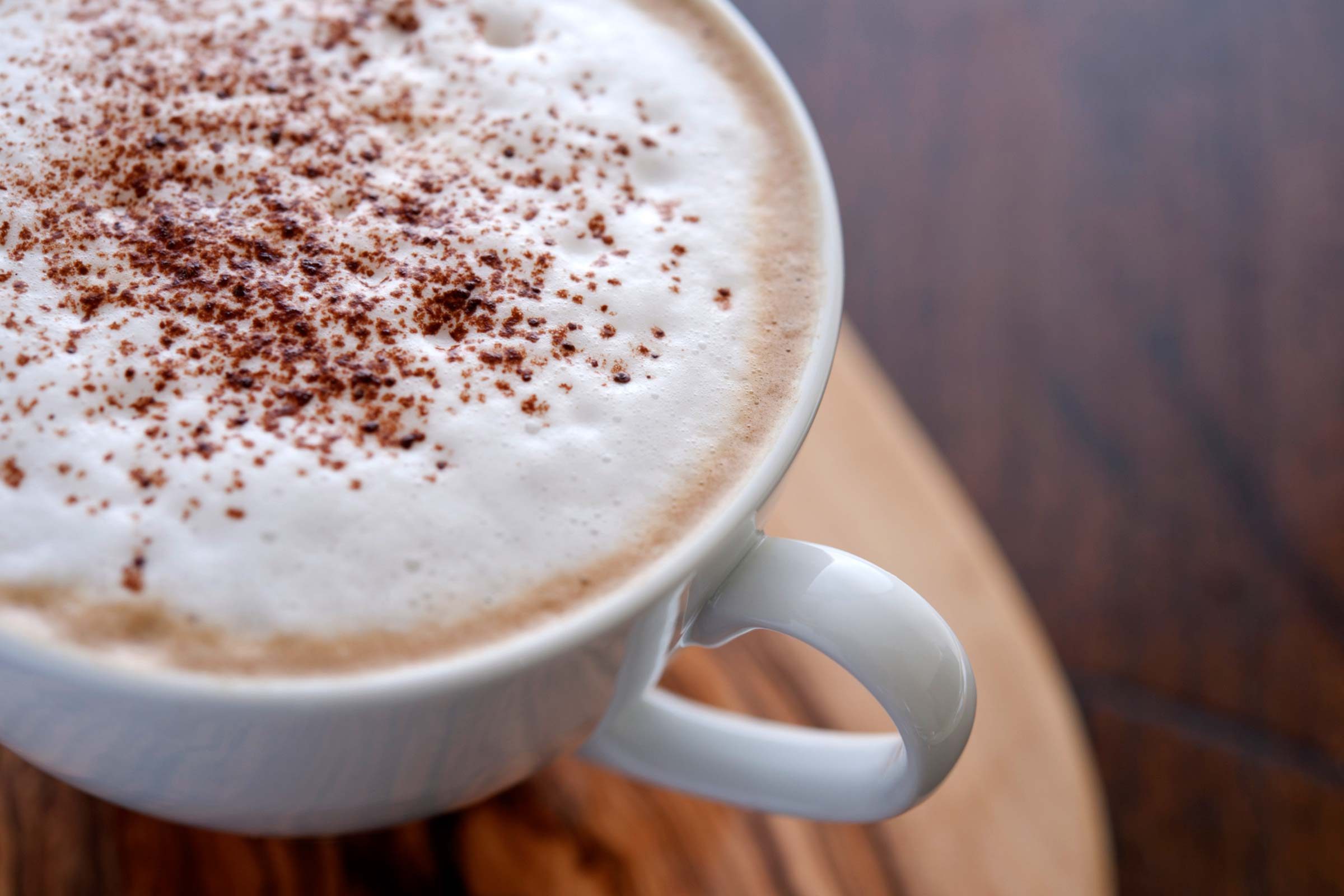
Drink a warm mug of spiced milk
“Drink spiced milk before sleeping,” says Ajmera. We’ve certainly heard about drinking warm milk before bed but spiced milk, when made with nutmeg, a natural sedative, just may help you get a sweeter and sounder sleep. Dr. Ajmera recommends drinking it three hours after your last meal, and says that those who suffer from lactose intolerance often find they can digest spiced milk. Here’s how to make her recipe: Place two cups of organic cow’s milk in a pot over medium heat. Add four to six crushed saffron threads, four to six crushed green cardamon pods, 1/2 teaspoon turmeric powder, 1/2 teaspoon cinnamon, a pinch of ginger, and a pinch of nutmeg to the milk. When the milk starts to boil, reduce the heat slightly and stir periodically so the milk doesn’t boil over. Stir in two to four teaspoons of organic sugar, if you want it sweeter and let it cool slightly before drinking.
Learn about the foods nutritionists never eat late at night.
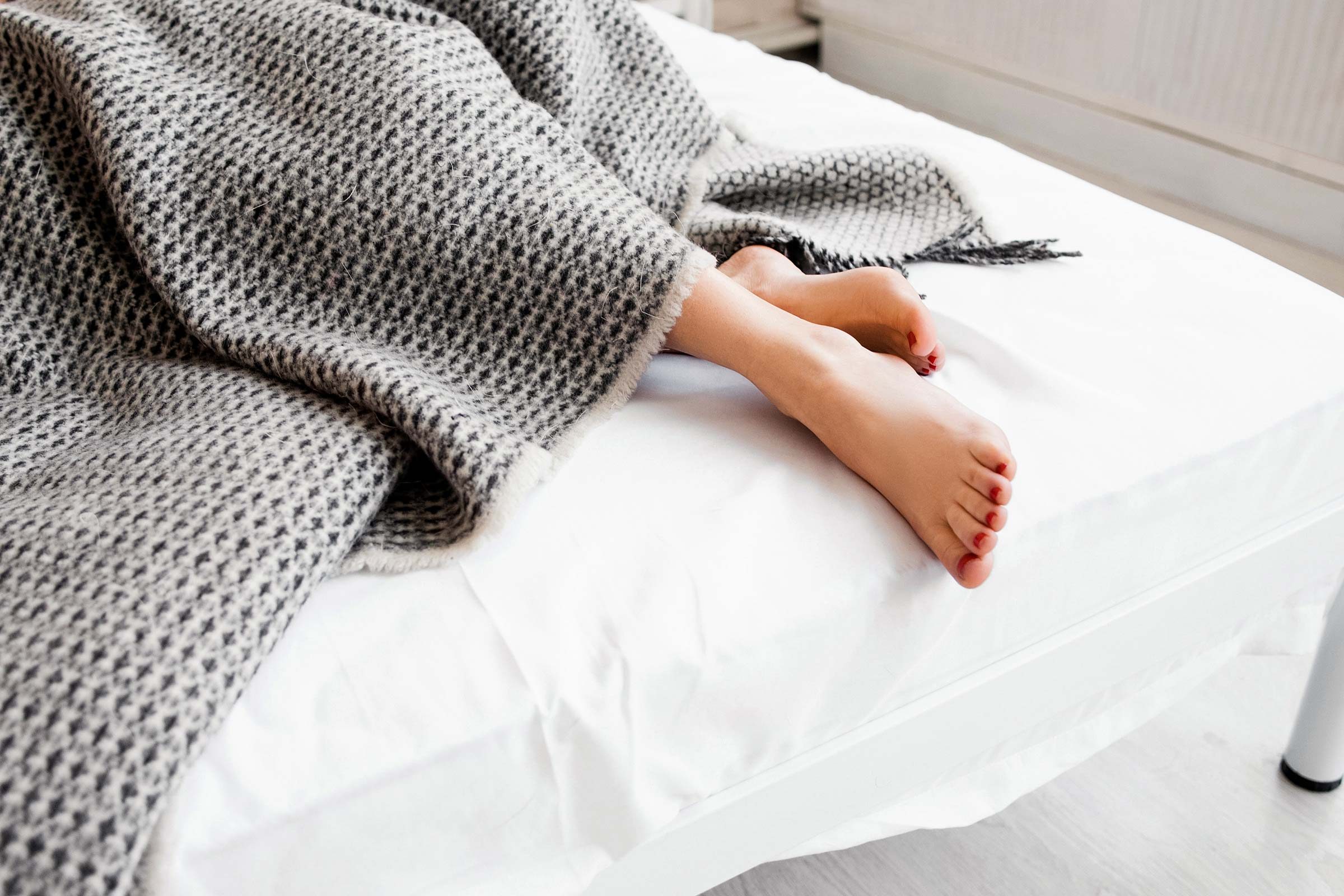
Do a body scan
The words “body scan” may conjure up images of an airport security check, but this is something different—and an effective way to promote sleep, according to Tiffany Cruikshank, founder of Yoga Medicine and author of Meditate Your Weight. “The parasympathetic nervous system is responsible for our ability to relax and fall asleep,” she says. “Body scanning is a simple technique that utilizes this by bringing awareness to the body one point at a time, to bring the body back to a more coherent and relaxed state. Close your eyes and turn your attention to the natural movement of your breath. Feel yourself relax there for a moment. Then begin by noticing the sensations at the top of the head, the face, scalp, and then the neck. Then, bring your attention to the right shoulder, arm, and then hand and repeat on the left side. Next notice your upper chest, abdomen, upper back, and mid- and low-back in that order. Lastly notice the right hip, leg, and foot; then repeat on the left side. End with your awareness in both feet and then on the body as a whole.” Try not to favor any specific area or start judging specific body parts you don’t like. In 10 to 20 minutes, you should be ready for a peaceful slumber.
Find out why waking up in the middle of the night could mean your brain is in trouble.
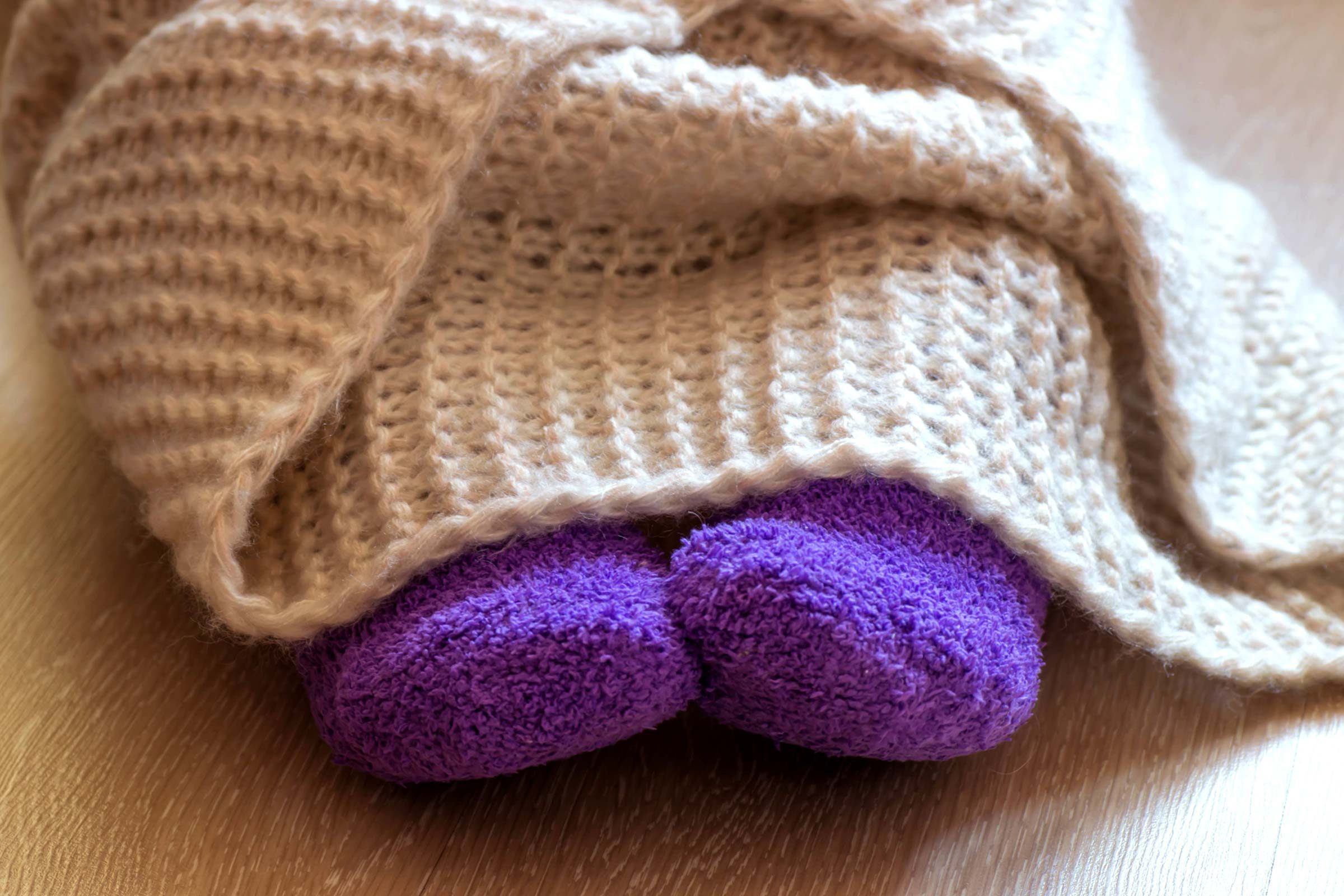
Cuddle up with a weighted blanket
Swaddling babies is as old as time. Wrapping a baby snug in a blanket mimics the security and comfort of the womb, and helps babies fall asleep. A similar principle can apply for adults. We all know a snuggly blanket and a calming bedroom are sleep-inducing, but according to studies, a weighted blanket may help those who suffer from more than the occasional sleepless night. When certain points on the body are stimulated by touch (or a weighted blanket), this type of deep-touch therapy promotes sleep by causing the brain to release serotonin, which regulates sleep.
Next, check out the best sleeping positions for a good night’s rest.